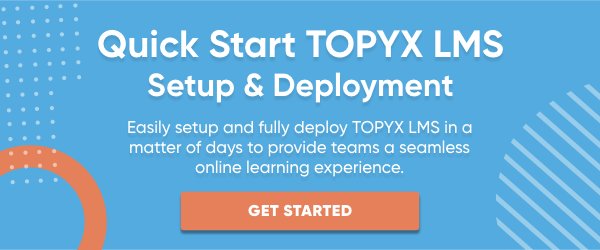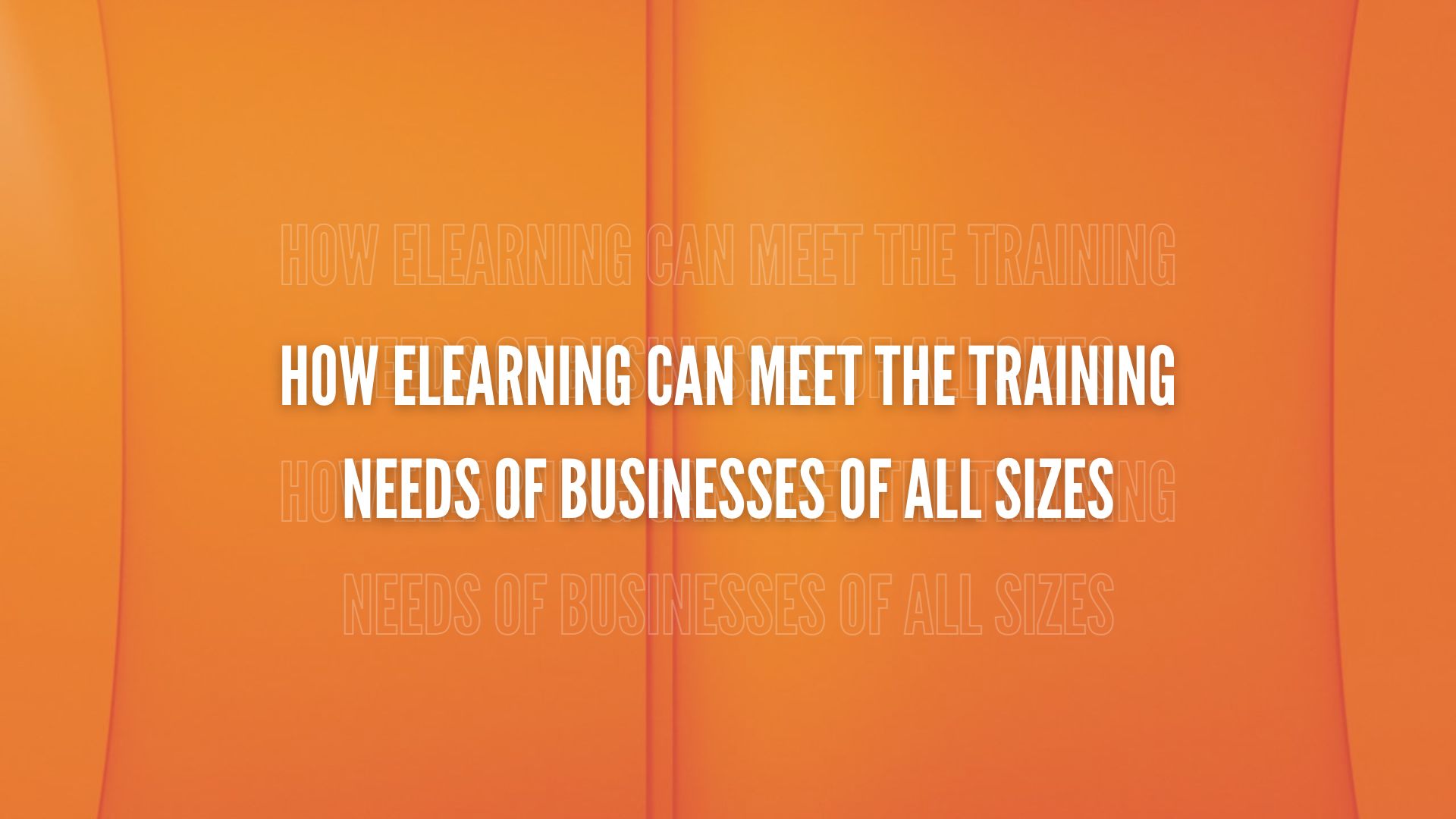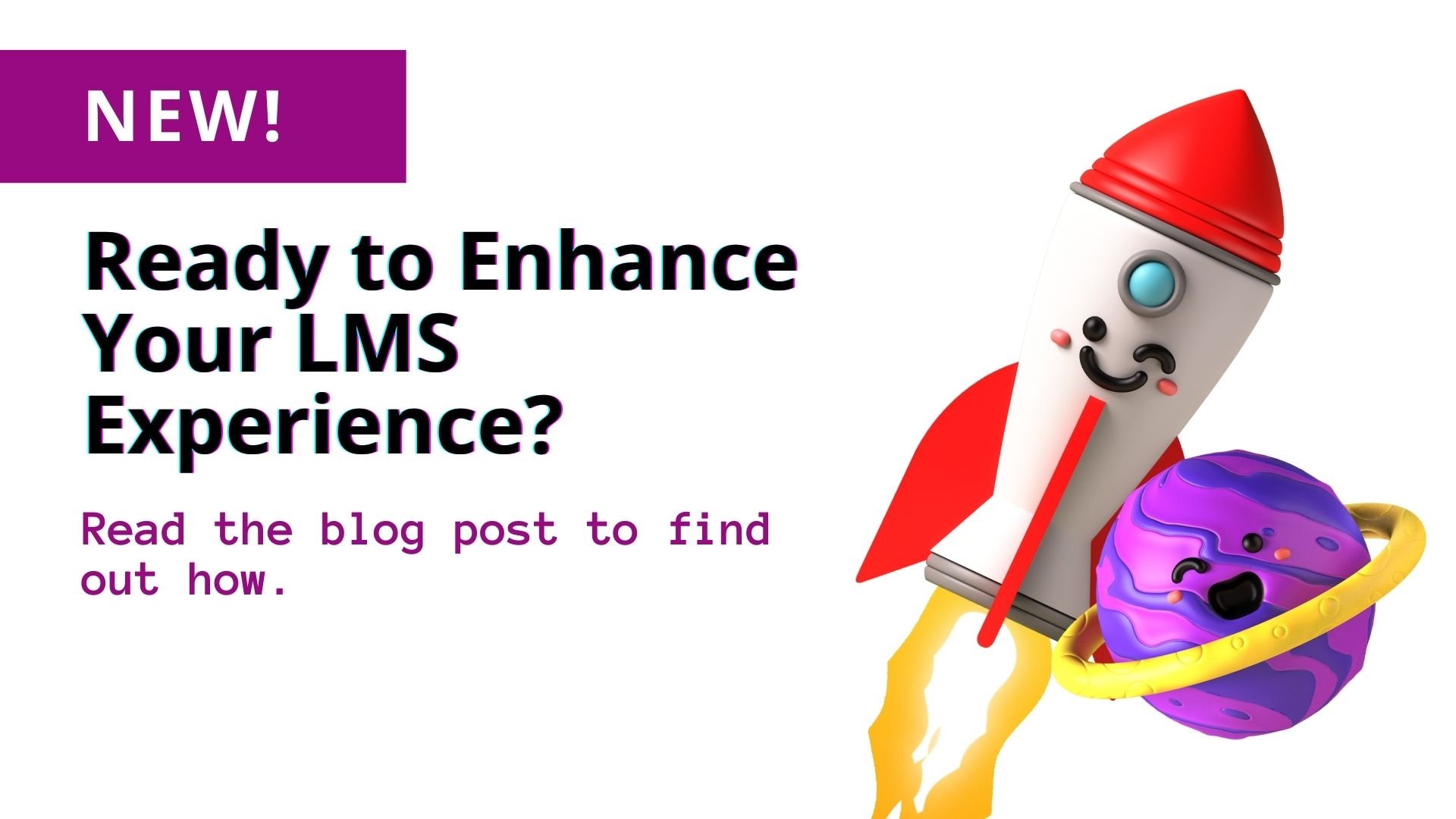An LMS, or Learning Management System, is a collaborative platform used by professionals to create, manage, and deliver learning and development materials. With the eLearning market expected to reach $275.10 billion in 2022 (1), the LMS is becoming an integral part of how organizations create and implement their training and educational processes across all verticals.
Everything you want and need to know about LMS.
Every employee can benefit from an LMS
From those learning basic company policies at the entry level to senior executives looking to ensure their knowledge is as up-to-date as possible.
The ultimate goal in implementing an LMS is to simplify and streamline internal educational procedures and provide convenience to both administrators and students. The powerful LMS software and user-friendly interface provides organizations with the infrastructure necessary to streamline eLearning.

LMS software most frequently consists of two parts:
- Server- performs the core functionalities of creating and managing courses.
- User interface - used by students and administrators to access content.
For administrators and company leaders, an LMS simplifies the distribution process and enables managers to generate and track training content in a centralized and secure location. For students using eLearning, the online space is always accessible and users can view assignments, test knowledge and track progress with online assessments.
Who uses an LMS?
- Associations - Associations looking to amplify member engagement with their certifications, training, or programs can use online learning to reach, retain, and grow membership.
- Corporations - Used by companies to improve reporting, implement enterprise-wide training & development, and maintain & organize records.
- Government agencies - Prevents governments from wasting critical budget funds and helps to share information to support efforts across various groups.
- Healthcare facilities - The solution simplifies compliance management for the healthcare sector and enables the sharing of information seamlessly.
- Financial Services - Insurance, broker dealers, and banks can quickly train both employees, agents, and customers in products, services and processes.
- Manufacturers - An LMS provides a modern, efficient way for manufacturers to educate customers, employees, and contractors on the proper operation of equipment and products.
- Nonprofits & associations - Constantly under pressure to do more with less; An LMS can help nonprofits expand communications to volunteers, board members, employees, and leadership to scale organizational growth.
- Retail Businesses - An LMS can be a flexible platform for digital retail training, allowing retailers to onboard employees quickly, across locations, to boost sales and improve customer service.
- Sales & Customer Service - Improving sales and customer service team training can lead to improved close rates, increased customer satisfaction, and more repeat business.
- Subject Matter Experts - SME’s can use LMS platforms to publish content, provide training programs, exams, and certifications with or without e-commerce options.
- Technology Companies - Deploy technology training more effectively, quickly introduce new features, or create communities to increase customer satisfaction and renewals.
What can you use an LMS for?
1. Employee training
Effectively communicating information to employees and providing them with adequate training resources is an effective strategy of any successful organization. An LMS eliminates the need for outsourcing employee training needs and enables administrators to create content and track progress in-house.
This ultimately saves organizations money, time and stress and most importantly provides convenience. An LMS gives employees the ability to improve and advance themselves professionally, all within a flexible online employee training program that they can manage at their own pace.
2. Employee onboarding
Aligning a new hire to understand procedures and company goals in a timely manner can be problematic if a business is unorganized. With an LMS, new employees can gain the knowledge and resources necessary to succeed at their new role. Educational content can encompass material from the company mission statement to job responsibilities and employee guidelines.
Related Reading: What to Do When Employees Are Disengaged During Onboarding
LMS Features
An LMS is an online learning platform designed for training. It lets people craft, distribute, track, or take part in training. These enable the software to meet a huge variety of administrator AND learner needs.
As to be expected, all LMS’ are not created equal. With a large number of eLearning users coming from the corporate sector, below is a sample of LMS features for a high-quality corporate LMS. Many of these benefits are also available across all verticals.
LMS Features for Learners
- Learning Paths - Customized online learning paths create a sequential order of delivery for courses and materials. Course/material sequences can be allocated to select users or groups, include eligibility requirements for advanced courses, and more.
- Social Learning - Social learning communities are used to create highly-focused learning paths around any topic or course. Administrators can monitor user involvement, while promoting a more engaged and collaborative online learning experience.
- Mobile Learning - Administrators can create and distribute training content online and students can access via desktop or on a smartphone, tablet, laptop or mobile device.
- Learning Catalog - Off-the-shelf eLearning courses help learners to apply employee training on the job. Look for an LMS solution that provides easy access to a robust library of digital courses to choose from.
LMS Features for Administrators
- Reporting & Dashboards - Administrators need to easily navigate reports for decision-making insights. Reporting and dashboard features can provide a comprehensive overview of key performance indicators, helpful for executives and management teams to track progress.
- Certifications - Courses and certifications are often a requirement for on-the-job training programs. An LMS can improve compliance management by directly tracking certificate and course completion, keeping employees up to date on required learnings.
- Content Management - LMS content management, creation, and authoring tools help to store and organize documents, audio files, videos, quizzes, assignments, and more to provide learners with easy access to the resources they need.
- LMS Integrations - Learning management systems should not be siloed away from the rest of your software. Improve efficiency and communication with LMS integrations that streamline internal processes and ensure accurate data sharing methods.
- Services & Add-ons - An LMS that offers additional add-ons can deliver added value to your eLearning investment. Streamline processes, enhance existing initiatives, and build the ideal learning environment for users.
Get Started with TOPYX LMS
If you’re interested in learning more about TOPYX learning management system, contact us for a demo of our robust and highly-customizable LMS solutions.
References
- http://www.orbisresearch.com/contacts/request-sample/226355








